It is quite shocking how common parasitic infections are. Although anyone can contract a parasitic infection, there are a few groups of people more at risk. These risky groups are: people with immune systems that are compromised due to illness; people who travel or live in areas where parasites thrive; those who lack proper sanitation and clean water; and childcare workers. Pregnant women are at risk for toxoplasmosis which is found in cat feces. Let's delve into the world of parasites.
Examples of Parasites
1. Bedbugs
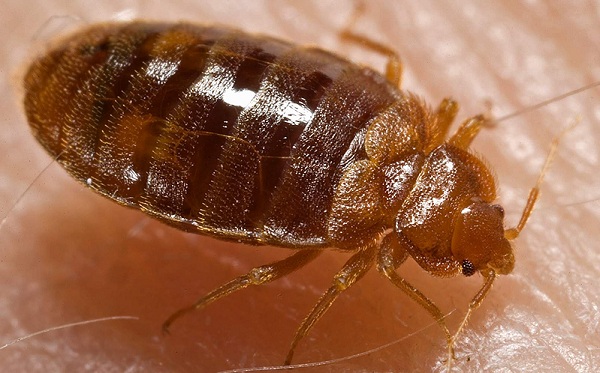 These parasites don't cause any illness but can elicit an allergic reaction in some people. They live in mattresses and furniture-anywhere they can have free and easy access to people or pets. Bedbug bites are often itchy so use an antihistamine cream to prevent scratching and potentially infecting the bite.
These parasites don't cause any illness but can elicit an allergic reaction in some people. They live in mattresses and furniture-anywhere they can have free and easy access to people or pets. Bedbug bites are often itchy so use an antihistamine cream to prevent scratching and potentially infecting the bite.
2. Lice
 Lice are usually a mother's nightmare since they are easily spread through close contact, like at school or playgroup. The three types are: head, pubic and body lice. Head lice irritate the scalp when they break through the skin to feed off the blood. This causes scratching which can become infected. Lice are able to lay eggs which cause itching when they hatch. There are many commercially available products to use to eliminate them.
Lice are usually a mother's nightmare since they are easily spread through close contact, like at school or playgroup. The three types are: head, pubic and body lice. Head lice irritate the scalp when they break through the skin to feed off the blood. This causes scratching which can become infected. Lice are able to lay eggs which cause itching when they hatch. There are many commercially available products to use to eliminate them.
3. Scabies
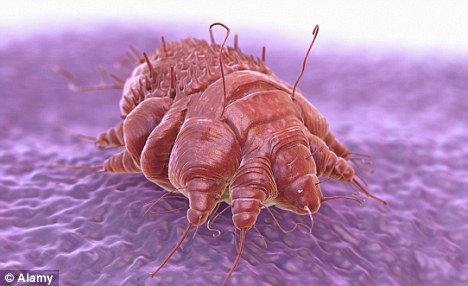 This type of parasite (mite) burrows under the skin to cause furrows. The adult mite is 3 mm long. The female lays her eggs in these furrows. Excessive scratching can lead to broken skin which then can become infected. The infected skin develops sores and crusty patches. It is contracted through direct skin contact and is treatable by prescription medicine.
This type of parasite (mite) burrows under the skin to cause furrows. The adult mite is 3 mm long. The female lays her eggs in these furrows. Excessive scratching can lead to broken skin which then can become infected. The infected skin develops sores and crusty patches. It is contracted through direct skin contact and is treatable by prescription medicine.
4. Pork Tapeworms
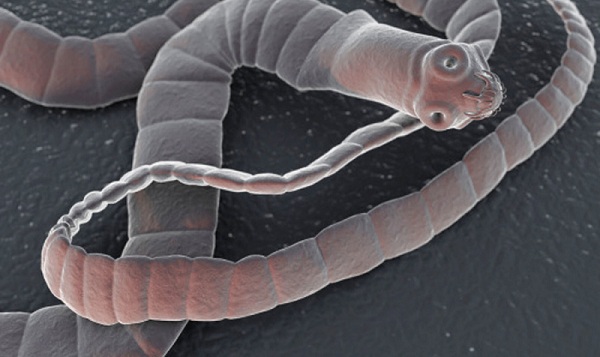 It is one of the examples of parasites that are contracted when the tapeworm eggs are ingested or there is contact with feces that have the eggs present. Tapeworms infect the brain and intestines. Some people get better without treatment whilst others need medical intervention.
It is one of the examples of parasites that are contracted when the tapeworm eggs are ingested or there is contact with feces that have the eggs present. Tapeworms infect the brain and intestines. Some people get better without treatment whilst others need medical intervention.
5. Roundworms
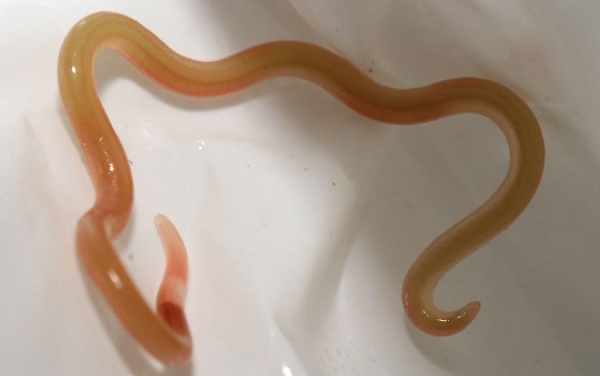 Somecommon roundworms are Ascariasis, Hookworm, Pinworm and Trichinosis. They all infect the intestines but the latter affects the muscles additionally. A hookworm can be about 1cm long and the width of a pin. They attach to the intestine and suck blood from the host. A severe infestation can cause the sufferer to develop constipation or diarrhea and to become anemic due to the blood loss. A pinworm can lead to sleep disturbances or skin infection because of the anal itching it causes.
Somecommon roundworms are Ascariasis, Hookworm, Pinworm and Trichinosis. They all infect the intestines but the latter affects the muscles additionally. A hookworm can be about 1cm long and the width of a pin. They attach to the intestine and suck blood from the host. A severe infestation can cause the sufferer to develop constipation or diarrhea and to become anemic due to the blood loss. A pinworm can lead to sleep disturbances or skin infection because of the anal itching it causes.
6. Cryptosporidium
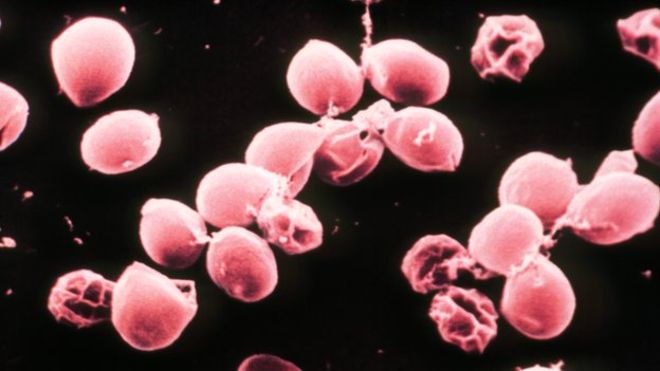 It causes diarrhea which is self-limiting. It is contracted by contact with feces of an infected person. It is commonly found in pool water.
It causes diarrhea which is self-limiting. It is contracted by contact with feces of an infected person. It is commonly found in pool water.
7. Giardia
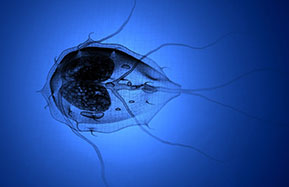 The microscopic protozoan Giardia is one of the examples of parasites that are contracted through eating or drinking infected food or water. It can also be contracted via contact with feces of an infected person. Symptoms include bloating, diarrhea, greasy stools, weight loss, fatigue and nausea.
The microscopic protozoan Giardia is one of the examples of parasites that are contracted through eating or drinking infected food or water. It can also be contracted via contact with feces of an infected person. Symptoms include bloating, diarrhea, greasy stools, weight loss, fatigue and nausea.
8. P. Falciparum
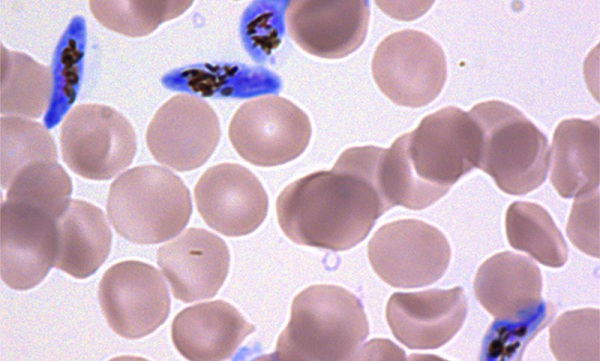 This parasite causes malaria and is carried by some mosquitoes. Malaria kills many people. Symptoms are very similar to the flu: fever, nausea, etc. A positive diagnosis is made when the presence of the parasite is detected in the blood under a microscope.
This parasite causes malaria and is carried by some mosquitoes. Malaria kills many people. Symptoms are very similar to the flu: fever, nausea, etc. A positive diagnosis is made when the presence of the parasite is detected in the blood under a microscope.
9. T. Vaginalis
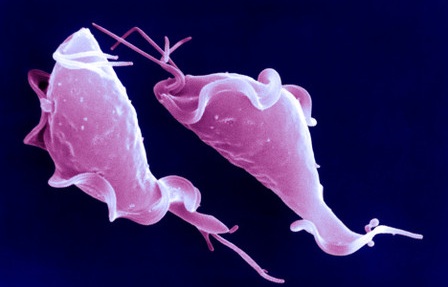 Trichomoniasis is the sexually transmitted disease caused by this parasite. Symptoms are burning, redness, unusual discharge or itching in the genitals, but some people have no symptoms. Antibiotics are available for treatment.
Trichomoniasis is the sexually transmitted disease caused by this parasite. Symptoms are burning, redness, unusual discharge or itching in the genitals, but some people have no symptoms. Antibiotics are available for treatment.
10. Toxoplasma
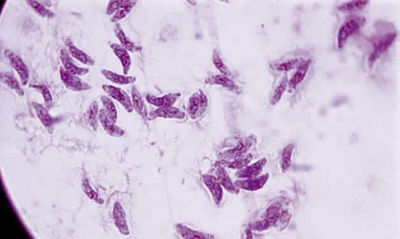 This parasite is found in infected cat litter, water or meat. It causes toxoplasmosis. Pregnant women and immune-compromised people are most at risk. Complications of this parasite are cysts that can develop in the brain, eyes and muscles. Symptoms include swollen and painful lymph nodes, body ache, etc.
This parasite is found in infected cat litter, water or meat. It causes toxoplasmosis. Pregnant women and immune-compromised people are most at risk. Complications of this parasite are cysts that can develop in the brain, eyes and muscles. Symptoms include swollen and painful lymph nodes, body ache, etc.
How to Get Rid of Parasite
The infections caused by the examples of parasites are usually treatable. Here are some tips to help you get rid of parasites.
1. Lifestyle Changes
Maintain good hygiene, especially after handling animals. Choose restaurants which maintain high standards of hygiene. Eat thoroughly cooked foods. Drink filtered water.
2. Diatomaceous Earth
Diatomaceous earth is common allopathic (alternative) treatment. It is believed to work by dehydrating the parasite until it dies and is eliminated from the body. There are 2 grades available: industrial grade and food grade. Industrial grade is not for human consumption. It is commonly used to filter pool water. Always ensure you buy the food grade. When on this treatment, ensure you take plenty of water to prevent dehydration. Wormwood, black walnut hulls and cloves are often used in combination to ensure the adult worms and the parasite eggs are eliminated.
3. Supplements and Herbs
Take selenium supplements for a week after the treatment for parasites so that the trace elements, like lead and aluminum, are neutralized. A commercial preparation with a combination of herbs is "Worm Out". A daily intake of garlic, preferably in the form of capsules, taken for 10 days after meals is believed to weaken the parasite.
4. Healthy Diet
Ensure you eat a healthy diet with plenty of water and fiber to prevent constipation after your parasite cleansing. Include raw fruits and vegetables, whole grains, nuts and seeds, brown rice and pasta to increase your fiber intake. The bowels have to perform optimally to eliminate the dead parasites.
Note
Once the parasite cleansing treatment starts working, you may feel even worse than before you started the treatment. This happens because the body still has to eliminate the parasites and their toxins, even though they are dead. Remember to check if the allopathic remedies are safe for use in pregnancy and breastfeeding, if that applies to you. If your condition doesn't improve, go to your doctor for treatment.
